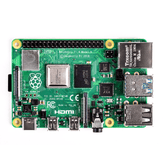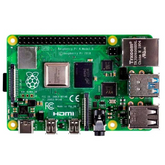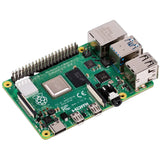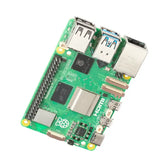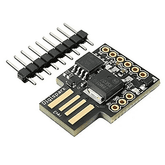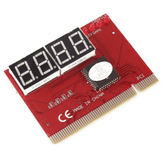How IoT in Raspberry Pi is transforming education
Summary
Explore the transformative power of IoT in education with Raspberry Pi in our latest blog. Starting with an insightful introduction, we delve into IoT for beginners and the integration of Raspberry Pi. Discover the advancements with Raspberry Pi 4 and the Computing Education Resources offered by the Raspberry Pi Foundation. Uncover the pivotal role of IoT in reshaping education and its synergy with Raspberry Pi. Learn about IoT automation possibilities, along with essential tools and resources for Raspberry Pi IoT education. Don't miss the chance to revolutionize learning. Read on for a tech-infused education journey that's both informative and enticing!
Introduction
The Internet of Things (IoT) is transforming the world around us. Simply put, IoT refers to the connection of physical objects and devices to the internet and to each other. This allows for the collection and exchange of data, remote monitoring and control, and more. The Raspberry Pi is a small, affordable computer that has become one of the most popular platforms for IoT projects and education. In this blog, we will explore the importance of IoT in education and the role that Raspberry Pi can play in teaching this emerging technology.
The potential of connecting devices and objects to the internet is enormous. IoT enables the creation of smart systems and environments using sensors, analytics and coordination. By embedding internet-connected sensors and intelligence into products, assets and infrastructure, IoT allows them to be monitored and controlled remotely. This creates game-changing possibilities for efficiency, automation and intelligence across application areas like smart cities, industrial IoT, healthcare, agriculture, energy, transportation and more.
The growth of IoT presents tremendous opportunities as well as challenges. As more and more devices get connected, there is a growing need for people with the skills to develop, deploy and manage IoT systems and applications. This is especially important in the education sector, as integrating IoT into schools can enable powerful new teaching methods and enhanced learning. Raspberry Pi provides an accessible and versatile tool for teaching IoT fundamentals, programming skills, and for building creative IoT-based projects. Let's take a closer look at how Raspberry Pi is being used to prepare students for the IoT future.

IoT for Beginners and Raspberry Pi
For those new to IoT, Raspberry Pi offers an easy starting point. The "IoT for Beginners and Raspberry Pi" curriculum provides a gentle introduction to core IoT concepts using Raspberry Pi boards and components. Learners build simple IoT experiments like connecting an LED light, motor, or button to the Raspberry Pi and controlling it via the internet.
Through hands-on projects, students gain practical experience with:
- Basic electronics and circuit building: Learners get started by assembling basic circuits using resistors, capacitors, LEDs, switches and connecting them to the General Purpose Input/Output (GPIO) pins on the Raspberry Pi board. This forms the basis for more complex connected devices.
- Connecting sensors and actuators: Simple sensors like temperature, motion, light, moisture etc. and output devices like buzzers, motors, lights can be wired to the Raspberry Pi. Students write Python code to read sensor values and control the outputs.
- Reading sensor data like temperature, motion, light level etc.: Data from sensors connected to the Raspberry Pi can be accessed using Python programs. Students learn techniques like polling, interrupts and events to reliably read and log sensor data.
- Controlling devices remotely over the internet: Actuators linked to the Raspberry Pi can be operated over the internet by exposing APIs using Flask in Python. Learners can switch LEDs on/off or rotate motors by calling these APIs from their laptops or mobile phones.
- IoT communication protocols like MQTT: Communication protocols like MQTT allow remote monitoring and control between devices. MQTT concepts like publish-subscribe, topics, brokers and clients are learned using Raspberry Pi boards.
- IoT cloud platforms: Clouds like AWS IoT Core allow securely connecting and managing devices at scale. Students get hands-on with device registration, telemetry ingestion, management console using Raspberry Pi with AWS cloud.
By completing the beginner level projects, students can acquire in-demand skills like IoT system design, device programming, and working with IoT cloud services. The affordable Raspberry Pi board allows them to get first-hand experience of bringing real objects online and laying the foundations for more advanced IoT learning.
Visit our Raspberry Pi Boards collection page for official boards.
IoT with Raspberry Pi 4
The "IoT with Raspberry Pi 4" Udemy course takes learners to the next level using the latest Raspberry Pi 4 model B boards. With a faster processor, more memory, modular design and gigabit ethernet, the Raspberry Pi 4 unlocks more sophisticated IoT projects.
In this course, students:
- Set up the Raspberry Pi 4 board and desktop environment: Students assemble the hardware, install the Raspbian OS, and configure options like WiFi, SSH, VNC etc. to access the Pi remotely.
- Connect sensors like temperature, ultrasonic, accelerometer etc.: Sensors to measure parameters like distance, movement, force, orientation etc. can be interfaced via GPIO or protocols like I2C and SPI.
- Process and visualize sensor data: Python techniques like matplotlib, pandas and numpy are used to process sensor data and generate graphical visualizations.
- Perform remote monitoring over the internet: Flask APIs allow remote systems to access real-time sensor data from the Raspberry Pi over HTTP calls.
- Use MQTT and Node-RED for IoT communication and control flows: Students learn to establish MQTT publish-subscribe messaging between devices and build event-driven workflows using Node-RED.
- Manage devices remotely using Blynk IoT platform: The Blynk mobile app and cloud APIs are used to remotely control and administer Raspberry Pi devices from anywhere.
- Develop practical monitoring and automation applications like intruder alarms, smart meters etc.: Combining various skills, relevant real-world IoT solutions are developed end-to-end during the course.

Through completing real-world style IoT projects, this course helps cement core IoT skills and prepares learners for advanced study in IoT development, analytics, and security. The curriculum demonstrates how the versatile Raspberry Pi 4 can be used as the hub for a wide range of IoT use cases.
Raspberry Pi Foundation's Computing Education Resources
In addition to hardware like the Raspberry Pi boards, the Raspberry Pi Foundation offers several free resources to aid IoT and computing education. These include:
- Online learning courses like 'Introduction to the Internet of Things' and 'Physical Computing with Python'. These interactive courses allow students to learn IoT concepts using Python programming on Raspberry Pi.
- The Raspberry Pi Projects book & website with step-by-step guides for building devices using sensors, screens, motors etc. This helps turn ideas into practical IoT gadgets.
- Raspberry Pi IoT Sensors Guidebook covering how to use sensors to collect and analyze data for IoT applications. Sensor working, data sheets, Python code snippets and project ideas are provided.
- Pi Bakery teaching resources on physical computing and IoT experiments using Raspberry Pi and Python. Topics like GPIO pins, PWM, I2C, SPI help build the electronics skills needed.
- IoT focused projects and tutorials for Raspberry Pi on sites like Hackster.io. These provide wiring diagrams, code samples and ideas which can be adapted.
- MagPi magazine with Raspberry Pi centric articles on programming, electronics and projects. Issues include IoT focused tutorials using sensors, machine learning, computer vision etc.
Educators can leverage these materials to develop engaging IoT learning experiences for students. The projects help students get hands-on with IoT devices and apply core concepts covered in the online courses. Raspberry Pi's enormous community also creates ample learning content to supplement these resources.
Role of IoT in Education
IoT is steadily transforming the education landscape. Connecting devices and objects to the internet is opening innovative ways of teaching and optimizing learning. Key benefits of IoT in education include:
- Enhanced student engagement: Interactive IoT experiments and projects make learning immersive. Students also learn better by applying concepts to build IoT-connected 'things'.
- Accessible learning aids: IoT enables assistive devices tailored to individual learners' needs. These could assist students with special needs, disabilities, or language challenges.
- Effective STEM education: IoT fundamentally involves STEM (Science, Technology, Engineering and Math) concepts. IoT projects allow hands-on learning of programming, electronics, and design thinking.
- Optimized school management: IoT devices can automate tasks like monitoring assets, managing campus safety, tracking attendance, adjusting lighting or HVAC systems based on occupancy etc. This creates an efficient and comfortable learning environment.
- Preparing future-ready talent: As IoT becomes ubiquitous, students need to be prepared with requisite skills. Learning IoT gives students a competitive edge and makes them workplace ready.
- Personalized learning: IoT allows gathering data to customize teaching to individual student needs and progress. It enables self-paced learning based on proficiency.
- Enriched learning for disadvantaged students: IoT tools can help bridge the digital divide and make quality education accessible to rural, remote or underprivileged learners.

Education IoT applications leverage technologies like RFID, WiFi, BLE, sensors, machine learning, and the cloud. Example projects include building smart school models with sensor-activated lights, HVAC and security systems; electronics kits for STEM learning; and assistive robots to support disabled students. Raspberry Pi is the ideal platform for many such educational IoT uses.
Raspberry Pi and Role of IoT in Education
The IEEE Xplore article "Raspberry Pi and Role of IoT in Education" provides valuable perspectives on using Raspberry Pi in IoT education. The key highlights include:
- With its versatility, affordability and huge community, Raspberry Pi is the most suitable platform for teaching IoT capabilities like collecting, visualizing and transmitting data.
- Raspberry Pi allows students to learn programming languages like Python and web technologies like MQTT and Node-RED that are essential for IoT application development.
- The Rapid IoT framework from Auckland University of Technology demonstrates how Raspberry Pi can be integrated in school labs to teach IoT concepts, electronics, and programming in a hands-on manner.
- Projects built by students using Raspberry Pi and IoT foster critical thinking, creativity, collaboration and problem-solving skills.
- Raspberry Pi helps democratize IoT education by making it accessible even for rural, remote or less privileged schools due to its low cost.
- Resources like Teach with Raspberry Pi by Oracle help educators integrate Raspberry Pi to teach computing and design thinking concepts.
The article concludes that Raspberry Pi has massive potential for teaching core IoT ideas and implementations. Educators can leverage this to impart both fundamental and advanced IoT skills to students from school level onwards. Raspberry Pi ensures learners are prepared to excel in the emerging IoT-driven world.
IoT Automation with Raspberry Pi
While IoT enables gathering data from devices, an equally important application is using this data to automate tasks and operations. The "IoT Automation with Raspberry Pi" Udemy course provides a step-by-step guide to developing such automation solutions using Raspberry Pi.
Learners will:
- Understand automation architectures like sensors, logic, and actuators. The building blocks of reactive and rule-based automation systems.
- Detect events and triggers using sensors like PIR for motion, Ultrasonic for distance, and Reed switches for state change.
- Process logic with Python programs and Node-RED flows to make decisions based on sensor inputs.
- Control electrical loads like motors, pumps, lighting by operating relays, switches, PWM and driving high current circuits.
- Operate mechanisms like garage doors, blinds, fans based on sensor data using actuators.
- Manage automated systems remotely from web and mobile apps using MQTT, HTTP, Blynk etc. - Monitor automation via live video stream using the Pi Camera module integrated with computer vision.
- Leverage cloud services like IFTTT for internet-driven automation rules and triggers.
The course demonstrates how Raspberry Pi can bring together sensors, cloud platforms, cameras and AI to create responsive automation systems, applicable for smart homes, industries, farms, and more.
Tools and Resources for Raspberry Pi IoT Education
There exists an extensive set of tools and resources to support educators in imparting IoT education using Raspberry Pi:
- Raspberry Pi hardware - Starter kits contain Pi board, power supply, SD card, sensors etc. while add-on modules like camera enable additional capabilities.
- Raspbian OS - The Debian-based open source OS boots up the Pi and provides access to GPIO pins, programming languages etc.
- GPIO Zero Python library - Simplifies controlling electronic components like LEDs, buttons connected to Pi GPIO pins.
- MQTT Python libraries like paho-mqtt - Used to add MQTT messaging to Raspberry Pi devices for IoT communication.
- Flask web framework - Enables building web interfaces to remotely control and monitor the Pi over HTTP.
- IoT cloud platforms like AWS, Azure, Google Cloud - Provide device connectivity, data ingestion and remote management capabilities.
- Online simulators like GPIO Zero online - Allow emulating Raspberry Pi GPIO circuits in the browser for prototyping.
- Raspberry Pi official tutorials - Cover basic electronics, programming and IoT projects using sensors.
- MagPi magazine - Contains tutorials, news and reviews focusing on Raspberry Pi and DIY computing projects
- Raspberry Pi community forums - Active forums to get guidance, troubleshooting and ideas from fellow enthusiasts.
These tools help smooth the learning curve for Raspberry Pi based IoT education. Educators can access documentation, tutorials, support forums and cloud-based tools to impart practical knowledge to students.
Conclusion
IoT is fast becoming a catalyst for transformation across domains including learning. Raspberry Pi offers an accessible platform for educators and students to gain first-hand experience of IoT systems and applications. The affordable boards allow building creative projects using sensors, actuators and online services. Learners can acquire valuable skills in electronics, programming, and cyber-physical systems while also having fun tinkering with IoT.
Raspberry Pi helps democratize IoT education so it can reach all learners irrespective of their backgrounds. It enables even school students to dabble in emerging technologies and be future ready. For working professionals too, Raspberry Pi allows rapidly prototyping IoT solutions and advancing their careers. As IoT becomes ubiquitous, skills to design, develop and manage connected systems will be highly sought after. With its capabilities and thriving community, Raspberry Pi is undoubtedly a powerful tool for shaping the IoT-ready workforce of tomorrow.





